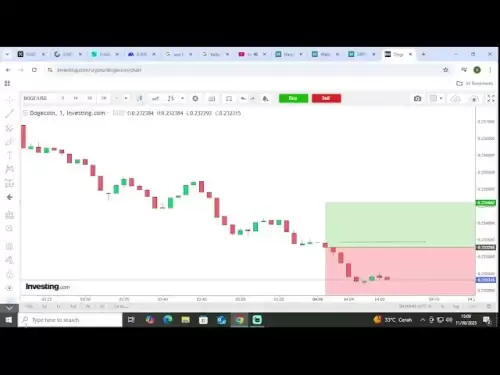-
 Bitcoin
Bitcoin $120100
1.16% -
 Ethereum
Ethereum $4329
2.25% -
 XRP
XRP $3.192
-0.22% -
 Tether USDt
Tether USDt $1.000
-0.01% -
 BNB
BNB $805.2
0.47% -
 Solana
Solana $178.7
-1.85% -
 USDC
USDC $0.9998
0.00% -
 Dogecoin
Dogecoin $0.2305
-1.62% -
 TRON
TRON $0.3445
1.17% -
 Cardano
Cardano $0.7940
-1.28% -
 Hyperliquid
Hyperliquid $44.44
-1.20% -
 Chainlink
Chainlink $21.86
-2.42% -
 Stellar
Stellar $0.4423
-0.15% -
 Sui
Sui $3.728
-3.84% -
 Bitcoin Cash
Bitcoin Cash $584.8
2.19% -
 Hedera
Hedera $0.2524
-2.87% -
 Ethena USDe
Ethena USDe $1.001
-0.02% -
 Avalanche
Avalanche $23.66
-0.78% -
 Litecoin
Litecoin $124.5
0.39% -
 Toncoin
Toncoin $3.399
1.77% -
 UNUS SED LEO
UNUS SED LEO $9.002
-0.44% -
 Shiba Inu
Shiba Inu $0.00001327
-2.10% -
 Uniswap
Uniswap $11.42
2.58% -
 Polkadot
Polkadot $3.957
-2.50% -
 Cronos
Cronos $0.1696
4.50% -
 Dai
Dai $1.000
0.00% -
 Ethena
Ethena $0.8139
3.04% -
 Bitget Token
Bitget Token $4.442
-0.38% -
 Monero
Monero $271.2
2.93% -
 Pepe
Pepe $0.00001168
-2.91%
What Is Leverage?
Leverage in cryptocurrency trading amplifies both potential profits and losses, demanding cautious risk assessment and the use of appropriate strategies for successful trading.
Dec 16, 2024 at 09:02 pm
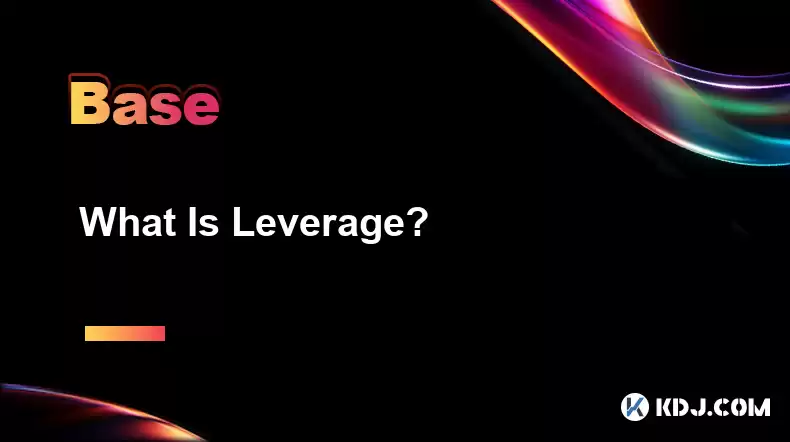
Key Points:
- Leverage in cryptocurrency trading amplifies the potential gains and losses.
- Traders use leverage to control a larger amount of currency than they possess, increasing their exposure to market fluctuations.
- Leverage is expressed as a ratio, such as 10:1 or 20:1.
- Margin trading allows leveraged trading, where traders borrow funds from the exchange and must maintain a certain amount of collateralized funds as margin.
- Calculating potential profit and loss using leverage is essential for risk management.
What Is Leverage?
Leverage in the cryptocurrency market is a tool that enables traders to increase their trading power by controlling a larger amount of currency than they hold in their account. It acts as a multiplier, amplifying both the potential profits and losses.
How Leverage Works:
When a trader applies leverage, they are essentially borrowing funds or borrowing power from the exchange or platform. This allows them to increase their position size, thereby multiplying their exposure to the market. The level of leverage is typically expressed as a ratio, such as 10:1 or 20:1.
Margin Trading:
Leveraged trading often occurs through margin trading accounts, where the trader borrows funds from the exchange. Margin accounts require traders to maintain a certain amount of funds as margin, which serves as collateral for the borrowed funds. The margin level is typically expressed as a percentage of the loan, and if the margin falls below a certain level, the exchange may issue a margin call, requiring the trader to deposit additional funds.
Calculating Profit and Loss:
Understanding how leverage affects potential profit and loss is crucial for risk management. The actual profit or loss realized while using leverage depends on the direction of the price movement and the level of leverage applied. For example, with 10:1 leverage, a 10% increase in the currency value will result in a 100% profit, and a 10% decrease will lead to a 100% loss.
Trading with Leverage:
- Assess your risk tolerance: Before engaging in leveraged trading, traders must carefully consider their risk tolerance and the potential consequences of losing more funds than they initially invested.
- Choose appropriate leverage: The choice of leverage ratio depends on the trader's risk appetite and trading strategy. Higher leverage increases the potential for both gains and losses.
- Monitor market conditions: Leverage trading requires diligent market monitoring to avoid significant losses in volatile conditions.
- Use stop-loss orders: Stop-loss orders help mitigate losses by automatically closing a position at a predetermined price level if the market moves against the trader.
FAQs:
- What are the risks of leverage trading? Leverage trading magnifies both gains and losses, exposing traders to increased financial risk.
- Is leverage trading suitable for all traders? No, leverage trading is not recommended for inexperienced or risk-averse traders.
- How can I reduce the risks of leverage trading? Traders can reduce risks by assessing their risk tolerance, choosing appropriate leverage, monitoring market conditions, and using stop-loss orders.
- What are the maximum and minimum leverage levels offered by cryptocurrency exchanges? The available leverage levels vary across exchanges, ranging from low leverage ratios (e.g., 2:1) to high leverage ratios (e.g., 100:1 or more).
Disclaimer: Leverage trading carries substantial risk and is not suitable for all traders. Traders should carefully consider their risk tolerance and trading experience before engaging in leveraged trading. Cryptocurrency markets are volatile, and losses can exceed initial investments. Conduct thorough research and seek professional advice if necessary before making any trading decisions.
Disclaimer:info@kdj.com
The information provided is not trading advice. kdj.com does not assume any responsibility for any investments made based on the information provided in this article. Cryptocurrencies are highly volatile and it is highly recommended that you invest with caution after thorough research!
If you believe that the content used on this website infringes your copyright, please contact us immediately (info@kdj.com) and we will delete it promptly.
- Bitcoin, Solana, MAGACOIN FINANCE: Navigating the 2025 Crypto Landscape
- 2025-08-12 00:30:13
- Cardano, ADA Holders, and Layer Brett: A Meme Coin with Real Utility?
- 2025-08-12 00:50:12
- Bitcoin, Michael Saylor, and Savvy Investors: A New Era of Digital Assets
- 2025-08-12 00:30:13
- Crypto Presales in 2025: Spotting the Next Big Thing with Analyst Insights
- 2025-08-12 00:50:12
- Cloud Mining in 2025: Bitcoin, Litecoin, and the Quest for Passive Income
- 2025-08-12 00:55:32
- Token Security, Agentic AI, Cybersecurity Guide: Navigating the New Frontier
- 2025-08-11 23:00:12
Related knowledge
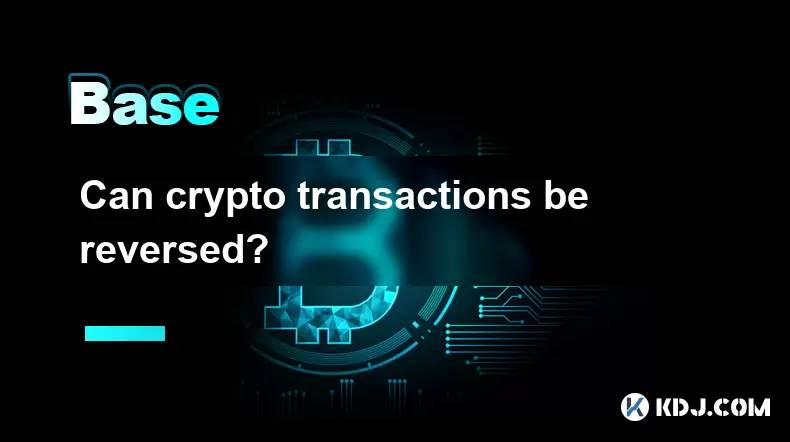
Can crypto transactions be reversed?
Aug 10,2025 at 01:35am
Understanding the Immutability of Blockchain TransactionsCryptocurrency transactions are built on blockchain technology, which is designed to be immut...

What happens if I forget my crypto wallet password?
Aug 09,2025 at 08:50am
Understanding the Role of a Crypto Wallet PasswordA crypto wallet password serves as a critical security layer that protects access to your digital as...
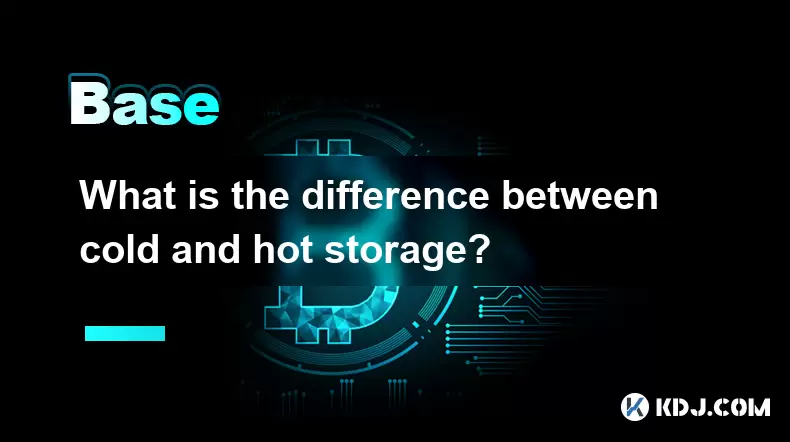
What is the difference between cold and hot storage?
Aug 12,2025 at 01:01am
Understanding Cold Storage in CryptocurrencyCold storage refers to offline methods of storing cryptocurrency private keys, ensuring they are not expos...
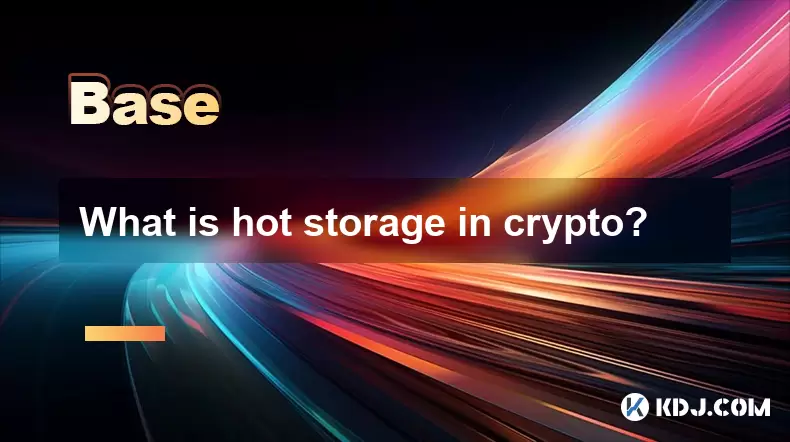
What is hot storage in crypto?
Aug 11,2025 at 07:08am
Understanding Hot Storage in CryptocurrencyHot storage refers to cryptocurrency wallets that are connected to the internet. Unlike cold storage soluti...
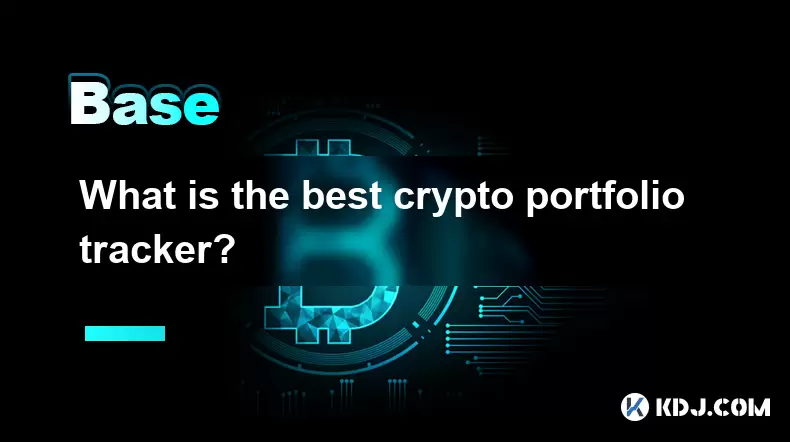
What is the best crypto portfolio tracker?
Aug 10,2025 at 05:08am
Understanding the Role of a Crypto Portfolio TrackerA crypto portfolio tracker is a digital tool designed to help investors monitor the performance of...
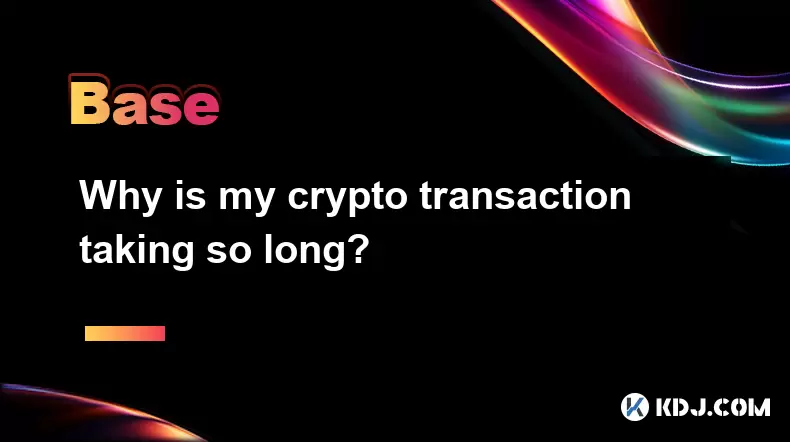
Why is my crypto transaction taking so long?
Aug 11,2025 at 11:35am
Understanding Blockchain Network CongestionWhen a crypto transaction is delayed, one of the most common causes is network congestion on the blockchain...

Can crypto transactions be reversed?
Aug 10,2025 at 01:35am
Understanding the Immutability of Blockchain TransactionsCryptocurrency transactions are built on blockchain technology, which is designed to be immut...

What happens if I forget my crypto wallet password?
Aug 09,2025 at 08:50am
Understanding the Role of a Crypto Wallet PasswordA crypto wallet password serves as a critical security layer that protects access to your digital as...

What is the difference between cold and hot storage?
Aug 12,2025 at 01:01am
Understanding Cold Storage in CryptocurrencyCold storage refers to offline methods of storing cryptocurrency private keys, ensuring they are not expos...

What is hot storage in crypto?
Aug 11,2025 at 07:08am
Understanding Hot Storage in CryptocurrencyHot storage refers to cryptocurrency wallets that are connected to the internet. Unlike cold storage soluti...

What is the best crypto portfolio tracker?
Aug 10,2025 at 05:08am
Understanding the Role of a Crypto Portfolio TrackerA crypto portfolio tracker is a digital tool designed to help investors monitor the performance of...

Why is my crypto transaction taking so long?
Aug 11,2025 at 11:35am
Understanding Blockchain Network CongestionWhen a crypto transaction is delayed, one of the most common causes is network congestion on the blockchain...
See all articles


























